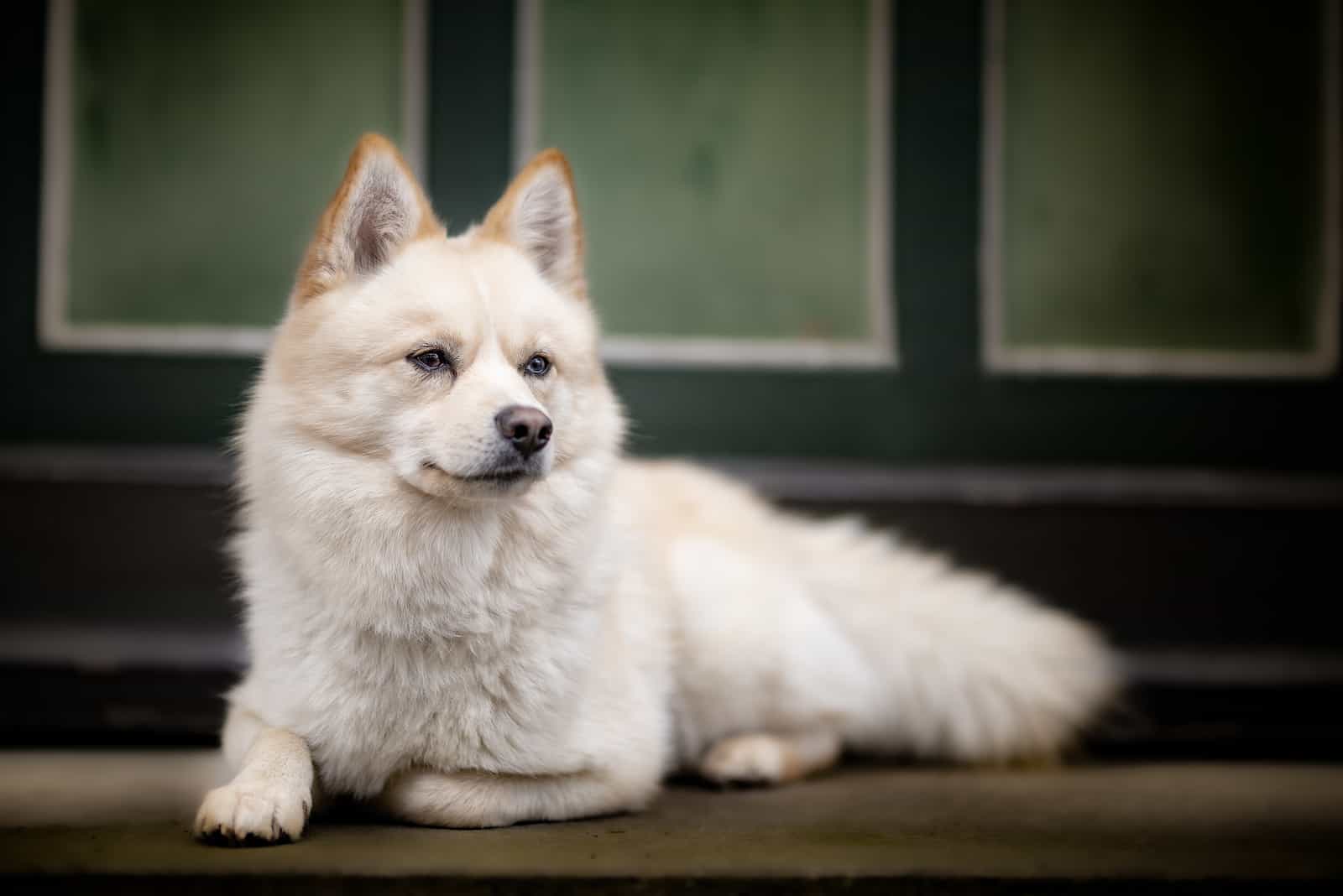The Pomsky breed came into existence in the early 2010s and the world was taken by surprise by these adorable lapdogs. From then on, their popularity kept increasing, earning them many die-hard fans across the globe.
However, the question that troubles all Pomsky owners, and dog lovers in general, is how long their pooches are going to live.
We all dread the moment when we’ll have to say goodbye to our furry companions, so we try to use the time we have with them as best as possible.
If you have been wondering how long a Pomsky lifespan is and if there’s anything you can do to make it longer, then you’ve come to the right place.
But first, let’s see what makes them such special pups.
What is a Pomsky?
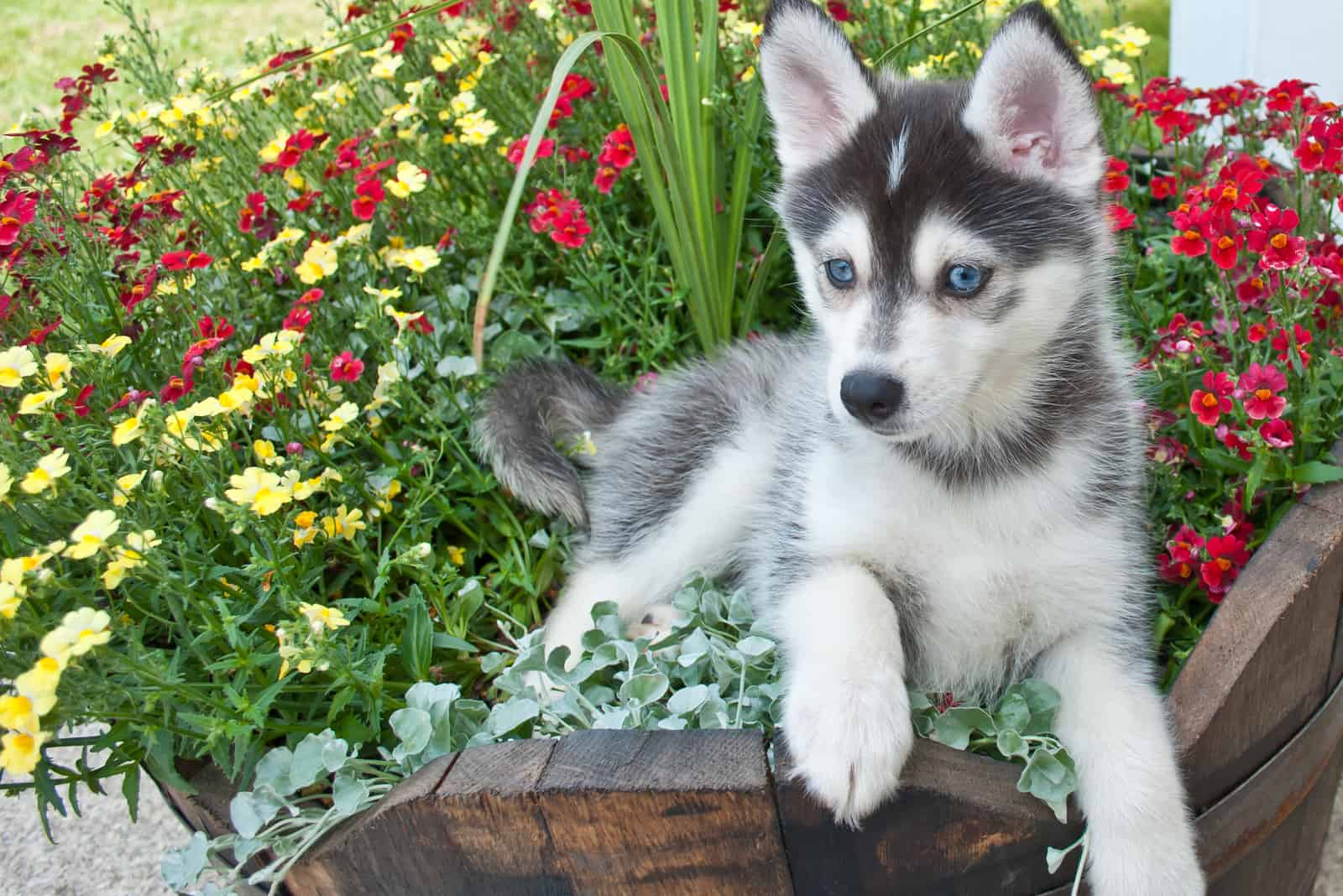
A Pomsky is a mixed breed that results from crossing a purebred Pomeranian with a purebred Siberian Husky. It’s believed that they originated in the USA around 2009, while the first recorded litter was born in 2012.
These blue-eyed, fluffy balls of fur deservedly earned the label of being the cutest pups around. They soon became one of the most popular designer dogs across the world, but despite their huge popularity, you don’t see many Pomskys walking around.
Even though breeders recognized the craze for these curious-looking pooches, breeding them wasn’t such an easy job.
Due to the size difference of their parents, natural breeding wasn’t an option since it wouldn’t be safe for a Pomeranian female to carry puppies to term.
That’s why this designer breed is created through artificial insemination, with the Pomeranian being the father, and the Husky being the mother.
This explains why they’re so expensive. Getting a puppy from a reputable breeder costs $2000 and up depending on the parents’ pedigree and the puppy’s appearance.
Since they are a crossbreed, they’re not recognized by major dog organizations, like the American Kennel Club (AKC) or the World Canine Organization. However, they can be registered by the International Pomsky Association (IPA), the Pomsky Club of America (PCA), or the Dog Registry of America (DRA).
A Pomsky’s appearance and temperament
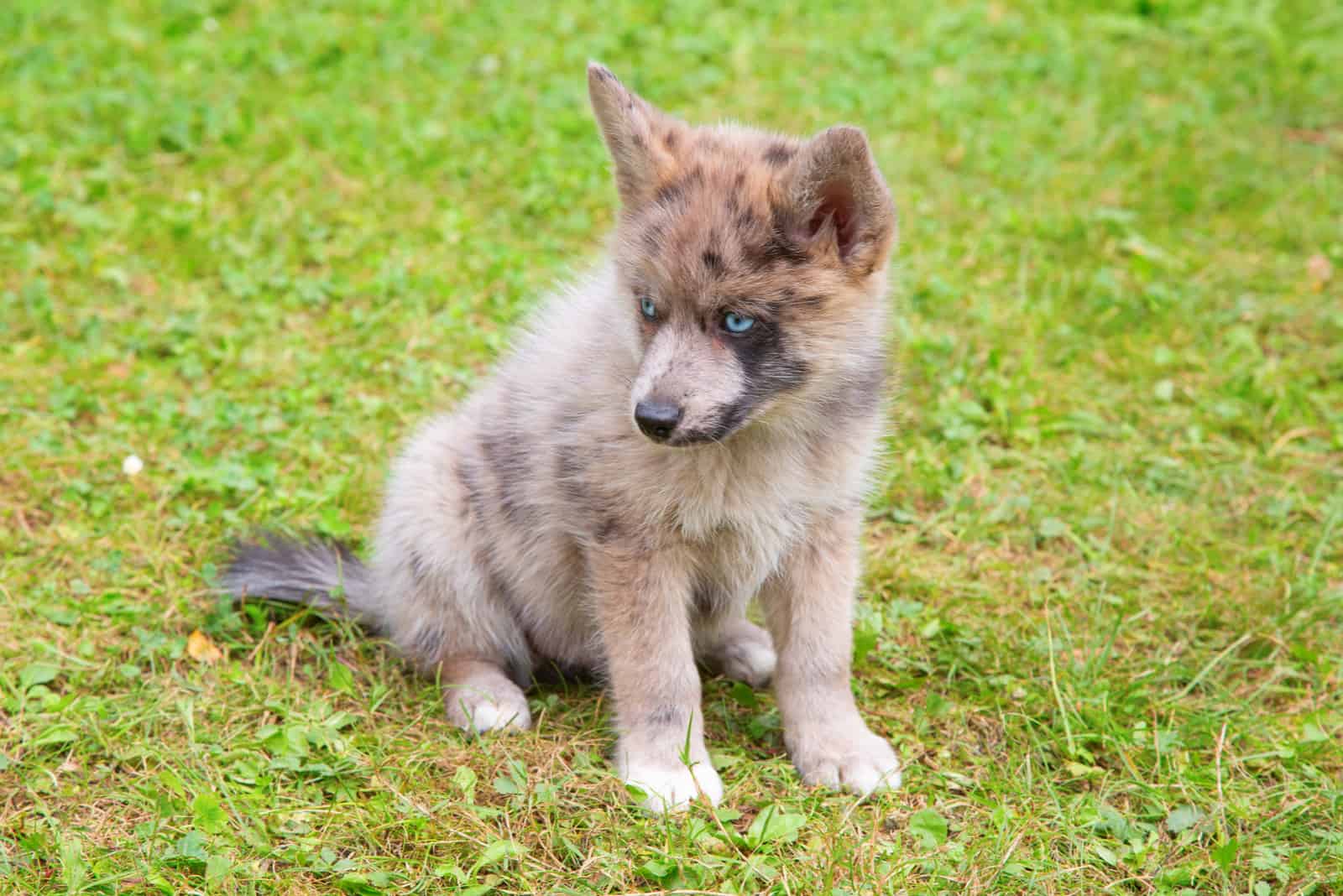
With mixed-breed dogs, you never know what you’ll get in terms of appearance and character. It could be a little bit of both, or they might resemble one of their parents more.
This is particularly true for first-generation Pomsky puppies, which are 50% Pomeranian and 50% Siberian Husky. The second generation, where the Pomsky is bred with either a purebred Husky or a purebred Pomeranian, is a little more predictable.
Isn’t this diversity exactly their charm? You can have two puppies from the same litter that look completely different, so it never gets boring.
But, what do Pomeranian Huskies usually look like?
They’re small to medium dogs, weighing between 20 and 30 pounds, at a height of 10 to 15 inches.
Pomeranians and Huskies are both spitz dog breeds, with thick, long fur, which the Pomsky inherits.
They’ve got double coats, with a dense undercoat and a topcoat that comes in a variety of colors, from black, gray, and cream, to white, fawn, or brown. Most often, they’ll be bi-colored in a combination of any of these colors.
Since both their Pomeranian and Husky parent are high-shedding dogs, they’re likely to shed quite a bit, too. That makes regular grooming a much-needed part of their lives, but nothing is too hard when we’re doing it for our furry friends.
Their round eyes also come in endless colors. There are Pomskys with brown, blue, hazel, or amber eyes. The fluffy tails and pointy ears also contribute to their irresistible cuteness.
Just like their appearance, a Pomsky’s personality is also unpredictable. They can inherit character traits from either parent’s side, but they tend to be intelligent, playful, confident, and affectionate dogs.
What many new Pomsky owners often don’t prepare for is their stubbornness and barking tendencies. Although they are smart pups that can learn quickly, their stubborn nature can sometimes get in the way of it. Don’t worry, it’s nothing that proper training and early socialization can’t fix.
They can also be very loud and protective, so they might not be the best pets for people living in thin-walled apartments. On the other hand, this makes them excellent guard dogs as they’ll always announce your guests.
How long do Pomskys live?
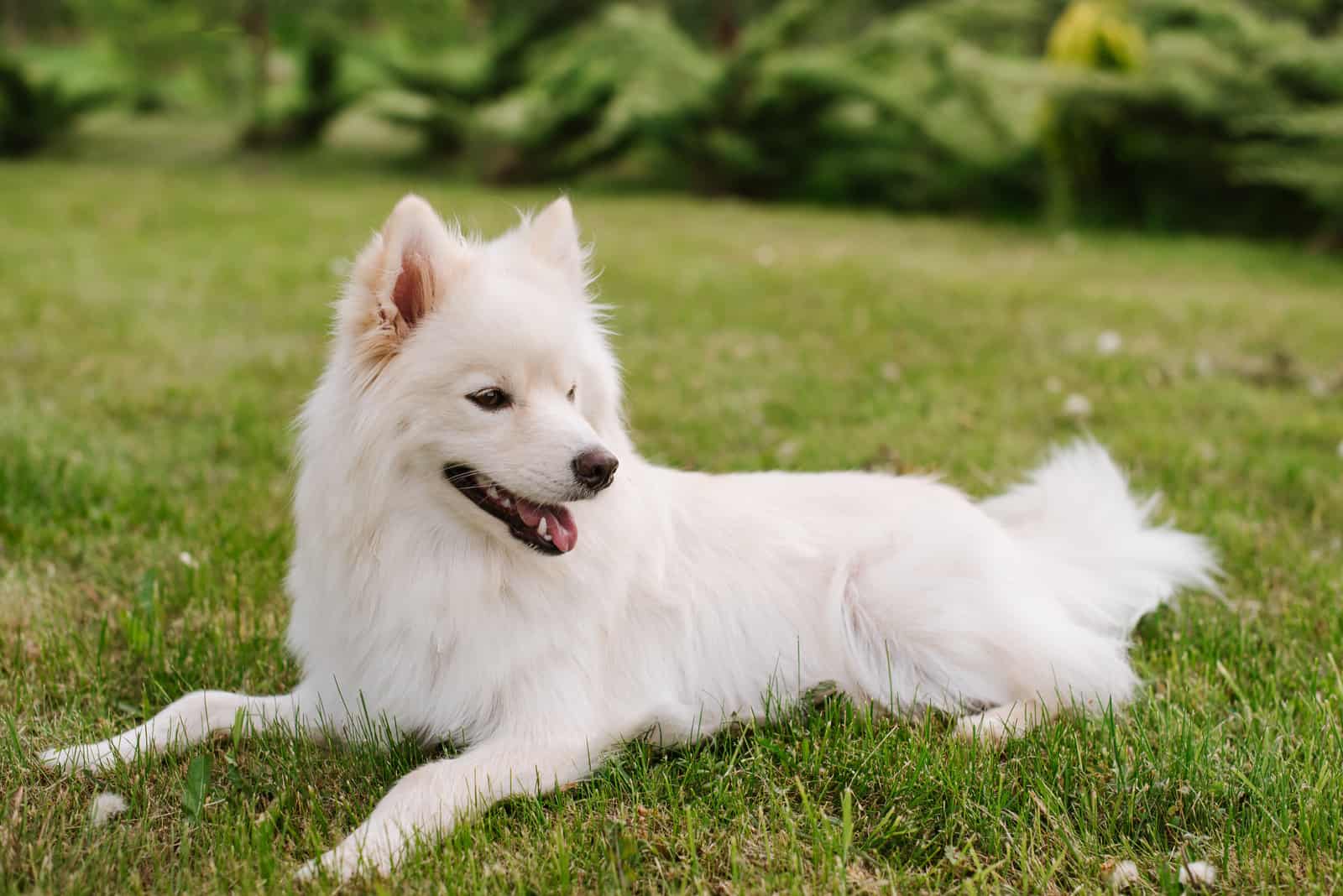
The dreaded question of all dog owners: How much time do I have with my furry buddy? The Pomsky lifespan ranges from 13 to 15 years, and it’s predicted based on the lifespans of its parents.
The average lifespan of the Siberian Husky is 12 to 14 years, while the lifespan of the Pomeranian is 12 to 16 years.
Anything less than our lifetimes seems too short as we can’t imagine having to say goodbye to our faithful companions that have been through thick and thin with us.
However, for small to medium dogs, 13 to 15 years is a pretty average life expectancy. In human years, that’s approximately the lifespan of 70 to 85 years.
There are a few factors that come into play when determining how long a specific dog will live:
• Size
The dog’s size has a big impact on its life expectancy. Small dogs tend to have longer lives, while bigger ones usually live shorter. This explains why Huskies have shorter lifespans than a Pomsky’s other parents.
• Genetics
The dog’s health is the most important thing that affects its lifespan. Some dogs are more prone to certain diseases than others, and it all comes down to genetics.
Being a mixed breed dog, the Pomsky is less likely to develop the health issues that are common in its parent breeds, making them generally healthier pups.
• Spaying and neutering
For dogs that are not intended for breeding, spaying and neutering are always the best options. It reduces the risks of the types of cancers that affect the reproductive organs while also making their lives less stressful, which can help them live longer.
• Care
It’s needless to say that how well you take care of your Pomsky dog can make a huge difference in their longevity. If you feed them high-quality food and do the best you can to keep them away from stressful situations, it’s more likely that they’ll live to see old age.
What health problems do Pomskys have?
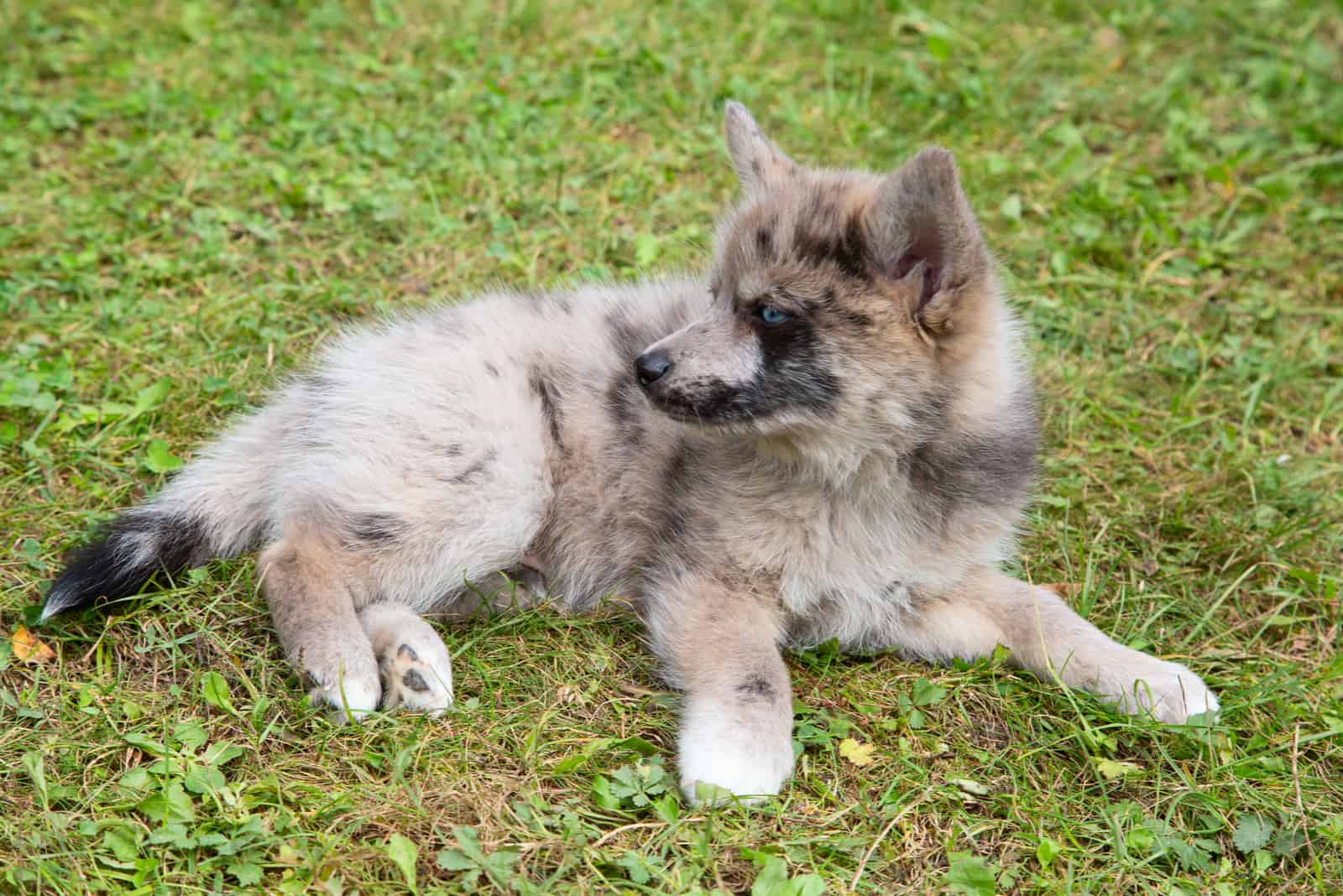
Even though Pomskys are less prone to developing health problems than their parents, they can still inherit genetic diseases from either side of the family.
Hip dysplasia is common in both Siberian Huskies and in Pomeranians, which increases the likelihood of it being passed down to the Pomsky.
It’s a condition where the ball and socket of the hip joint don’t fit properly, sometimes leading to loss of the joint’s function. A dog with this disease usually experiences a lot of pain and has a decreased range of motion.
Many Huskies and Pomeranians also have to deal with different eye defects, so their offspring might be troubled by them as well.
The eye problems that often occur are juvenile cataracts, corneal dystrophy, and progressive retinal atrophy. It’s a good idea to have your Pomsky’s eyes checked out by a veterinary ophthalmologist.
The common health problems of Pomeranians that Pomskys might inherit are:
This condition is characterized by the recurrent dislocation of the kneecap, and it’s very common in small size breeds. When the kneecap is dislocated, the dog has difficulty bearing weight on the affected leg, and although it doesn’t cause pain, it can have long-term consequences on their overall health.
• Hypothyroidism
Hypothyroidism is an endocrine disorder where the thyroid gland is underactive, causing the metabolic rate to slow down. When the metabolism slows down, all the organs in the dog’s body are affected.
Some of the signs that a Pomsky might be suffering from this are lethargy, weight gain, excessive shedding, and skin problems.

Photo from @_watchdogz_
• Severe Hair Loss Syndrome
This disorder, also known as Black Skin Disease, leads to partial or complete hair loss. It’s more common in male Pomeranians and it can have an effect on the dog’s skin, endocrine, lymphatic, and immune system.
• Collapsing Tracheas
Tracheal Collapse is a progressive respiratory condition that causes breathing problems for dogs. If the dog has a harsh, dry cough, difficulty breathing, or if he’s often wheezing, it could be a sign that he’s suffering from this condition.
• Heart disease
Pomeranians are susceptible to different types of heart diseases, which can be passed onto Pomskys. Heart failure is the leading cause of this for these purebred dogs in their senior years.
The Pomeranian Husky mix is also prone to skin problems and dental issues.
Dental disease is the result of plaque buildup, which can lead to infections and inflammation if it’s not taken care of in time. This is why proper dental hygiene is essential for these pups.
As we can see, health is the number one thing that affects both the quality and the longevity of a dog’s life. It’s important to take your pooch for regular health check-ups in order to prevent any disease from developing, or at least to treat them in time.
Asking the Pomsky breeder that you’re getting your puppy from about its parents’ history of health conditions could help you better prepare for any future problems.
How can you help them live longer?
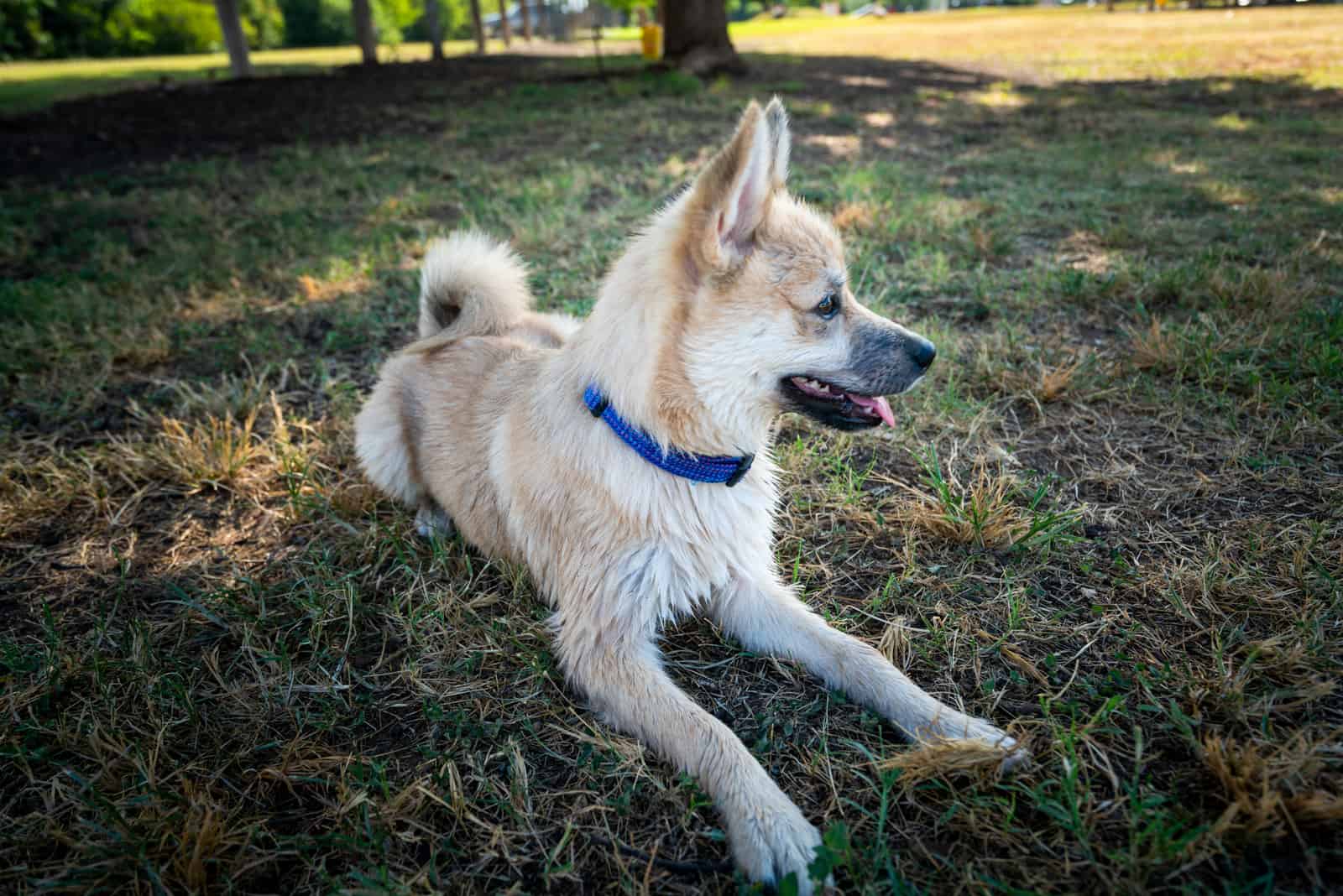
There may not be a way to elongate the Pomsky lifespan by a few additional years, but there are things you can do to help them reach old age.
The first thing you can do for your pup is to simply be on the lookout for any signs of the major health concerns we’ve described above.
All diseases are easier to treat when they’re in their early stages, so being aware of what health problems a Pomsky is prone to can help them live longer lives.
The second thing is to keep them away from danger, and the easiest way to do that is through proper training.
Regular exercise and a healthy diet will make your pup’s life less stressful and more fulfilled; thus, making their lives longer.
Training
Maybe you’re wondering how training would help make your dog’s life longer. It’s simple… a well-behaved pup will listen to your commands in dangerous situations, which can prevent them from getting hurt.
When you let a dog that doesn’t have the recall command under his paw off-leash, he may run into the street or to a dog with an unfriendly attitude. Untrained dogs also have a higher chance of developing behavioral issues, which makes both your and their lives more stressful.
Pomskys are intelligent dogs, so training them usually doesn’t take much effort. They can be stubborn at times, but if you start early, it shouldn’t be a big problem.
They are obedient puppies, so they can learn all kinds of tricks pretty quickly. Positive reinforcement methods will keep them motivated, and at the same time, they’ll help you build a stronger relationship.
You can start with their training as soon as you take them home. They’ll first need to be house-trained and leash-trained, and when they get a bit older, you can start teaching them some basic commands.
Be patient and understanding if they don’t do well from the start; they’ll catch on quickly, and once they grow up, you’ll have a well-mannered dog that will do anything to make its human happy.
Exercise
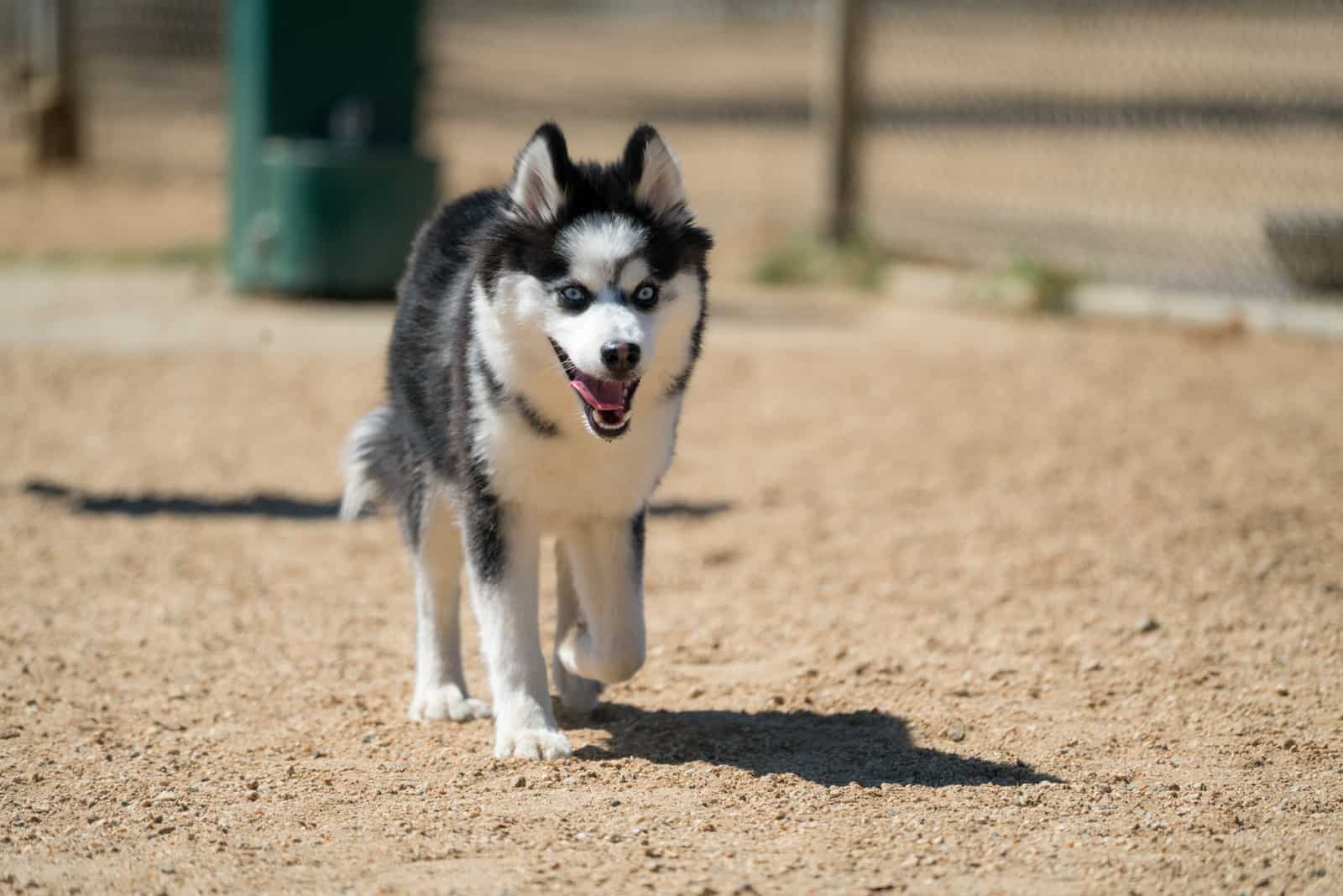
Huskies are known to be extremely energetic dogs that need a lot of exercise and mental stimulation, while Pomeranians are more on the lazier side.
Most Pooskys are somewhere in between, but some may resemble one of their parents more when it comes to exercise needs.
A good thirty- to forty-minute daily walk will tire your pup out, while also helping him to relieve stress and socialize with other dogs. It’s beneficial for you as well… there’s nothing better than a nice walk after a hard day.
Regular exercise keeps dogs healthy, helps them stay in shape, and makes them happy. There are no downsides to it.
Being the playful puppies they are, Pomskys also need a lot of engaging playtime at home. Take some time out of your schedule to play with them; it will make them happier and it might lead to a longer life.
Diet
Like all dogs, what Pomskys eat has a huge impact on their health. Therefore, choosing a good diet that consists of solid meat proteins with moderate fats and low carbohydrates can help elongate your pup’s life.
When planning your Pomsky’s diet, you’ll need to consider their size, age, how often and at what time of the day to feed them, and what foods to avoid.
Pomskys are considered to be small-sized dogs, so it’s best to find high-quality, small-breed dog food to feed them. On the other hand, if you’re one of the owners that enjoy cooking delicious meals for your pup, make sure the portions are appropriate for their size.
The amount of food your dog needs also depends on their activity levels. An energetic pooch that never gets tired of playing will need bigger portions than a dog that enjoys lazing around.
Puppies up to six months of age need three meals a day, while adult dogs only need two. All the treats you give them in between for being good boys and girls don’t count; just don’t go overboard no matter how hard it may be to resist.
What time of the day to feed them is up to you and your pooch to decide, but take into consideration that dogs shouldn’t eat right before or after they’re going for an exercise.
There are many things that we eat that are poisonous to dogs, so keep that in mind before you give them a piece of your snack. Human foods such as wasabi, spam, prunes, jalapenos, and poppy seeds should be kept far away from your Pomsky’s reach as they can be detrimental for its health.
To sum up
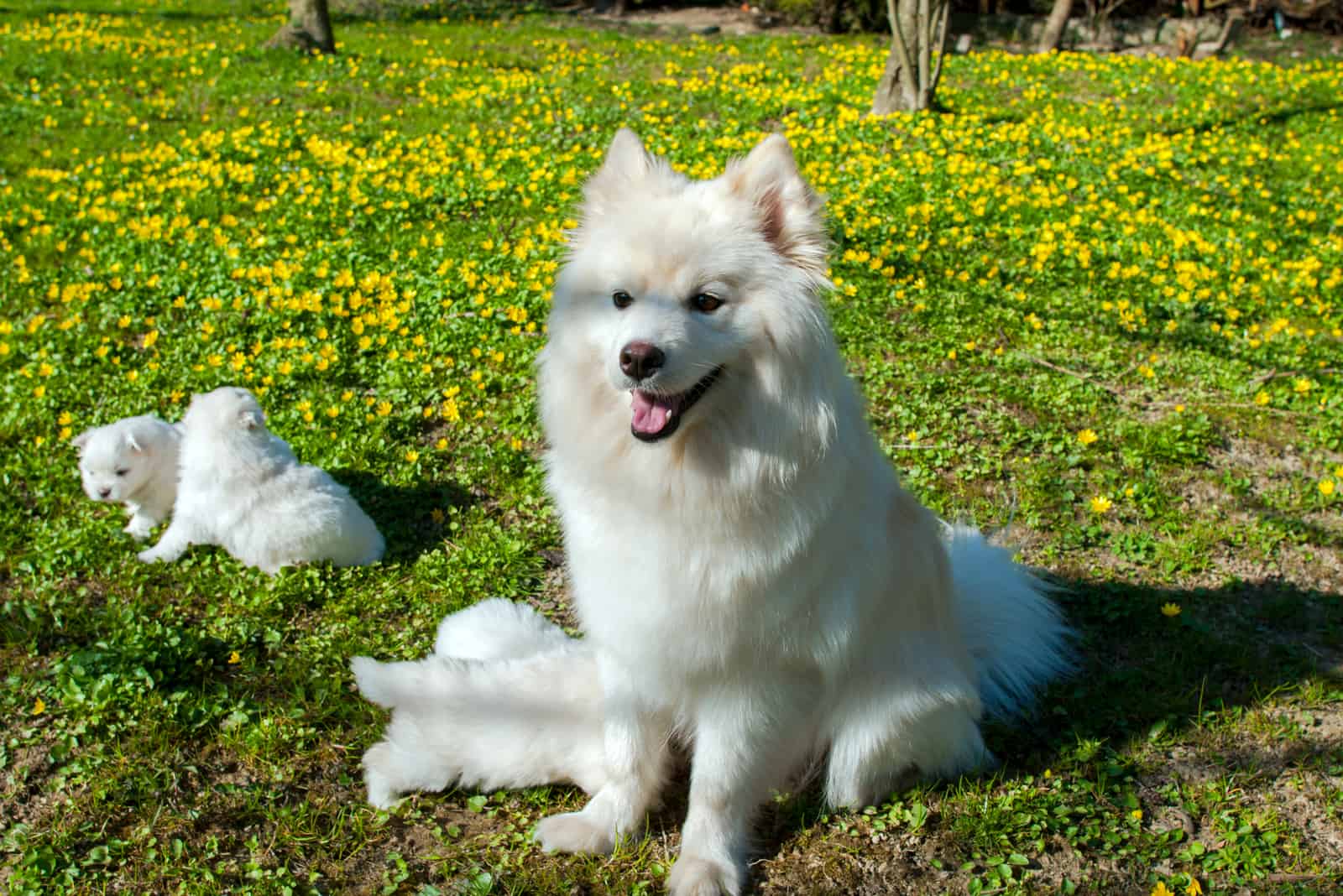
The Pomsky, a cross between a Husky and a Pomeranian, is a relatively new designer breed that has been around for about a decade.
Since they can’t be naturally bred due to health risks, there aren’t many around, although they are extremely popular among many dog lovers.
Their adorable looks and charming personalities are simply irresistible, and no one who has ever seen one can deny it.
They may be stubborn at times, but if you give them the attention they deserve, they’ll be your best friends, and at times, even silly little guardians.
However, the hard thing about owning a Pomsky, or any dog for that matter, is knowing that they can’t live as long as us. It’s heartbreaking to even think about it, but we can’t go against biology.
So, how long do Pomskys live?
On average, the Pomsky lifespan is 13 to 15 years. A dog might live shorter or longer than that depending on its genetics, health, size, and life experiences.
Even though you may not be able to stop your pup from aging, there are things you can do to help them live better lives.
If you take proper care of their health, make sure they have a good diet and enough exercise, and don’t expose them to stressful or dangerous situations, then your dog will be able to have a longer, happier life.
Training and socialization are also important for the dog’s well-being since they have an influence on your mutual bond and can minimize the chances of the dog developing anxiety or behavioral problems.
The best advice we can give you is to enjoy their company the best you can for as long as possible. No matter how busy you might be, you can always find some time for your pooch. It is, after all, why we have them by our sides.
Read Next: Dog Years To Human Years: What Is My Dog’s Age?

